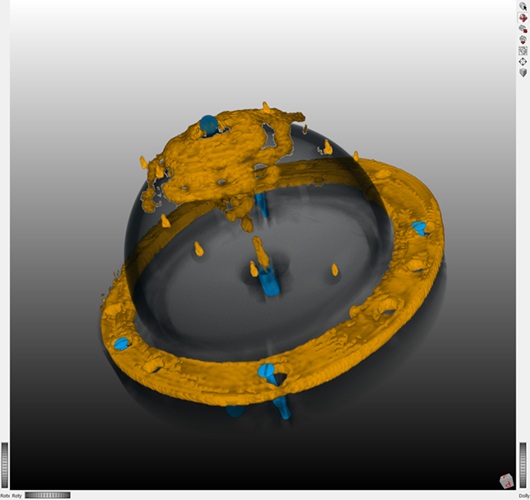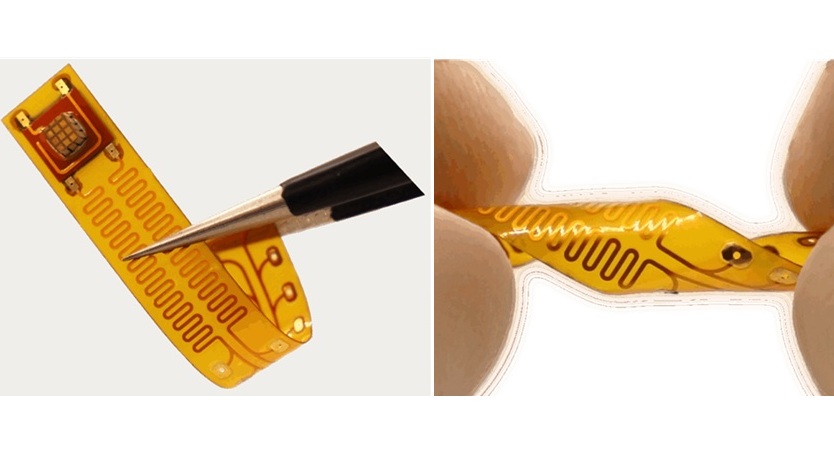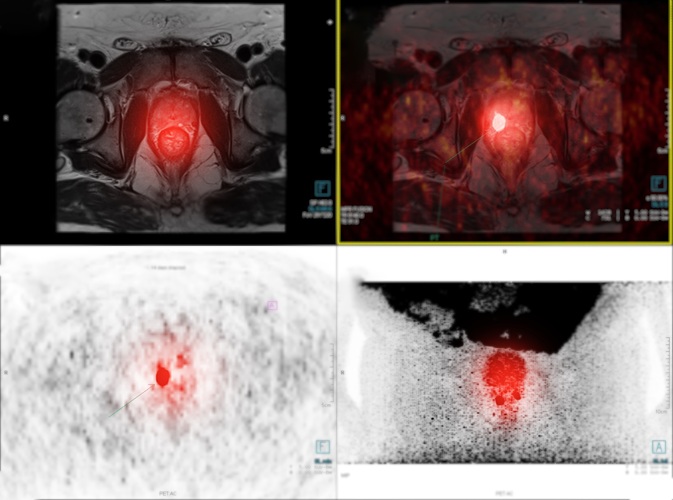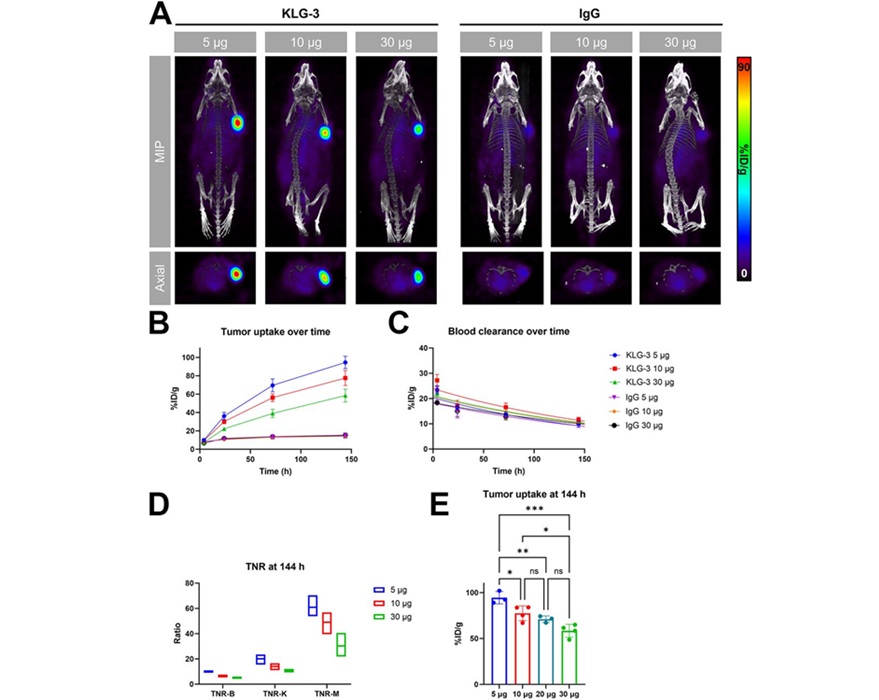Imaging Significantly Underestimates the Size of DCIS Tumors
|
By MedImaging International staff writers Posted on 15 Apr 2021 |

Image: Imaging can underestimate the actual size of a breast tumor (Photo courtesy of Getty Images)
A new study suggests that pre-operative imaging of high-volume ductal carcinoma in situ (DCIS) lesion size is inaccurate.
Researchers at the University of British Columbia (UBC; Vancouver, Canada), Western University (UWO; London, Canada), and Mount Saint Joseph Hospital (Vancouver, Canada) undertook a retrospective review of clinicopathologic data of patients treated for DCIS with breast conserving surgery (BCS) between 2012 and 2018. Mammographic and sonographic lesion sizes were compared with final pathology sizes.
The results showed that for 152 lesions visible on mammography, mean size on imaging was significantly smaller when compared to final pathology (2.3 centimeters versus 3.6 centimeters, respectively); the mean difference of 1.3 cm was a significant underestimation, with a correlation coefficient of 0.367. For the 48 lesions visible on ultrasound, the radiologic size was significantly smaller than pathologic size (1.7 centimeters versus 4.1 centimeters, respectively), but degree of underestimation was not significantly correlated. The study was published on March 23, 2021, in The American Journal of Surgery.
“Imaging size of DCIS tumors assessed by both mammography and ultrasound were significantly smaller when compared with their final size on pathology,” concluded lead author Rachel Liu, MD, of UWO, and colleagues. “Increase in the degree of underestimation by mammography was noted as the histological tumor size increased. This must be taken into consideration during surgical planning for maximizing the success of breast conserving surgery and minimizing return to the operating room.”
DCIS is the most common type of non-invasive breast cancer, in which the abnormal cells are contained inside the milk ducts. If DCIS is not treated, it may eventually develop into invasive breast cancer, which can spread outside the ducts into the breast tissue and then possibly to other parts of the body. Since DCIS cannot usually be felt as a breast lump or other breast change, most cases are diagnosed following routine screening with mammograms or ultrasound, appearing as micro-calcifications.
Related Links:
University of British Columbia
Western University
Mount Saint Joseph Hospital
Researchers at the University of British Columbia (UBC; Vancouver, Canada), Western University (UWO; London, Canada), and Mount Saint Joseph Hospital (Vancouver, Canada) undertook a retrospective review of clinicopathologic data of patients treated for DCIS with breast conserving surgery (BCS) between 2012 and 2018. Mammographic and sonographic lesion sizes were compared with final pathology sizes.
The results showed that for 152 lesions visible on mammography, mean size on imaging was significantly smaller when compared to final pathology (2.3 centimeters versus 3.6 centimeters, respectively); the mean difference of 1.3 cm was a significant underestimation, with a correlation coefficient of 0.367. For the 48 lesions visible on ultrasound, the radiologic size was significantly smaller than pathologic size (1.7 centimeters versus 4.1 centimeters, respectively), but degree of underestimation was not significantly correlated. The study was published on March 23, 2021, in The American Journal of Surgery.
“Imaging size of DCIS tumors assessed by both mammography and ultrasound were significantly smaller when compared with their final size on pathology,” concluded lead author Rachel Liu, MD, of UWO, and colleagues. “Increase in the degree of underestimation by mammography was noted as the histological tumor size increased. This must be taken into consideration during surgical planning for maximizing the success of breast conserving surgery and minimizing return to the operating room.”
DCIS is the most common type of non-invasive breast cancer, in which the abnormal cells are contained inside the milk ducts. If DCIS is not treated, it may eventually develop into invasive breast cancer, which can spread outside the ducts into the breast tissue and then possibly to other parts of the body. Since DCIS cannot usually be felt as a breast lump or other breast change, most cases are diagnosed following routine screening with mammograms or ultrasound, appearing as micro-calcifications.
Related Links:
University of British Columbia
Western University
Mount Saint Joseph Hospital
Latest General/Advanced Imaging News
- Extending CT Imaging Detects Hidden Blood Clots in Stroke Patients
- Groundbreaking AI Model Accurately Segments Liver Tumors from CT Scans
- New CT-Based Indicator Helps Predict Life-Threatening Postpartum Bleeding Cases
- CT Colonography Beats Stool DNA Testing for Colon Cancer Screening
- First-Of-Its-Kind Wearable Device Offers Revolutionary Alternative to CT Scans
- AI-Based CT Scan Analysis Predicts Early-Stage Kidney Damage Due to Cancer Treatments
- CT-Based Deep Learning-Driven Tool to Enhance Liver Cancer Diagnosis
- AI-Powered Imaging System Improves Lung Cancer Diagnosis
- AI Model Significantly Enhances Low-Dose CT Capabilities
- Ultra-Low Dose CT Aids Pneumonia Diagnosis in Immunocompromised Patients
- AI Reduces CT Lung Cancer Screening Workload by Almost 80%
- Cutting-Edge Technology Combines Light and Sound for Real-Time Stroke Monitoring
- AI System Detects Subtle Changes in Series of Medical Images Over Time
- New CT Scan Technique to Improve Prognosis and Treatments for Head and Neck Cancers
- World’s First Mobile Whole-Body CT Scanner to Provide Diagnostics at POC
- Comprehensive CT Scans Could Identify Atherosclerosis Among Lung Cancer Patients
Channels
Radiography
view channel
AI Hybrid Strategy Improves Mammogram Interpretation
Breast cancer screening programs rely heavily on radiologists interpreting mammograms, a process that is time-intensive and subject to errors. While artificial intelligence (AI) models have shown strong... Read more
AI Technology Predicts Personalized Five-Year Risk of Developing Breast Cancer
Breast cancer remains one of the most common cancers among women, with about one in eight receiving a diagnosis in their lifetime. Despite widespread use of mammography, about 34% of patients in the U.... Read moreMRI
view channel
AI-Assisted Model Enhances MRI Heart Scans
A cardiac MRI can reveal critical information about the heart’s function and any abnormalities, but traditional scans take 30 to 90 minutes and often suffer from poor image quality due to patient movement.... Read more
AI Model Outperforms Doctors at Identifying Patients Most At-Risk of Cardiac Arrest
Hypertrophic cardiomyopathy is one of the most common inherited heart conditions and a leading cause of sudden cardiac death in young individuals and athletes. While many patients live normal lives, some... Read moreUltrasound
view channel
Non-Invasive Ultrasound-Based Tool Accurately Detects Infant Meningitis
Meningitis, an inflammation of the membranes surrounding the brain and spinal cord, can be fatal in infants if not diagnosed and treated early. Even when treated, it may leave lasting damage, such as cognitive... Read more
Breakthrough Deep Learning Model Enhances Handheld 3D Medical Imaging
Ultrasound imaging is a vital diagnostic technique used to visualize internal organs and tissues in real time and to guide procedures such as biopsies and injections. When paired with photoacoustic imaging... Read moreNuclear Medicine
view channel
New Camera Sees Inside Human Body for Enhanced Scanning and Diagnosis
Nuclear medicine scans like single-photon emission computed tomography (SPECT) allow doctors to observe heart function, track blood flow, and detect hidden diseases. However, current detectors are either... Read more
Novel Bacteria-Specific PET Imaging Approach Detects Hard-To-Diagnose Lung Infections
Mycobacteroides abscessus is a rapidly growing mycobacteria that primarily affects immunocompromised patients and those with underlying lung diseases, such as cystic fibrosis or chronic obstructive pulmonary... Read moreImaging IT
view channel
New Google Cloud Medical Imaging Suite Makes Imaging Healthcare Data More Accessible
Medical imaging is a critical tool used to diagnose patients, and there are billions of medical images scanned globally each year. Imaging data accounts for about 90% of all healthcare data1 and, until... Read more
Global AI in Medical Diagnostics Market to Be Driven by Demand for Image Recognition in Radiology
The global artificial intelligence (AI) in medical diagnostics market is expanding with early disease detection being one of its key applications and image recognition becoming a compelling consumer proposition... Read moreIndustry News
view channel
GE HealthCare and NVIDIA Collaboration to Reimagine Diagnostic Imaging
GE HealthCare (Chicago, IL, USA) has entered into a collaboration with NVIDIA (Santa Clara, CA, USA), expanding the existing relationship between the two companies to focus on pioneering innovation in... Read more
Patient-Specific 3D-Printed Phantoms Transform CT Imaging
New research has highlighted how anatomically precise, patient-specific 3D-printed phantoms are proving to be scalable, cost-effective, and efficient tools in the development of new CT scan algorithms... Read more
Siemens and Sectra Collaborate on Enhancing Radiology Workflows
Siemens Healthineers (Forchheim, Germany) and Sectra (Linköping, Sweden) have entered into a collaboration aimed at enhancing radiologists' diagnostic capabilities and, in turn, improving patient care... Read more





















